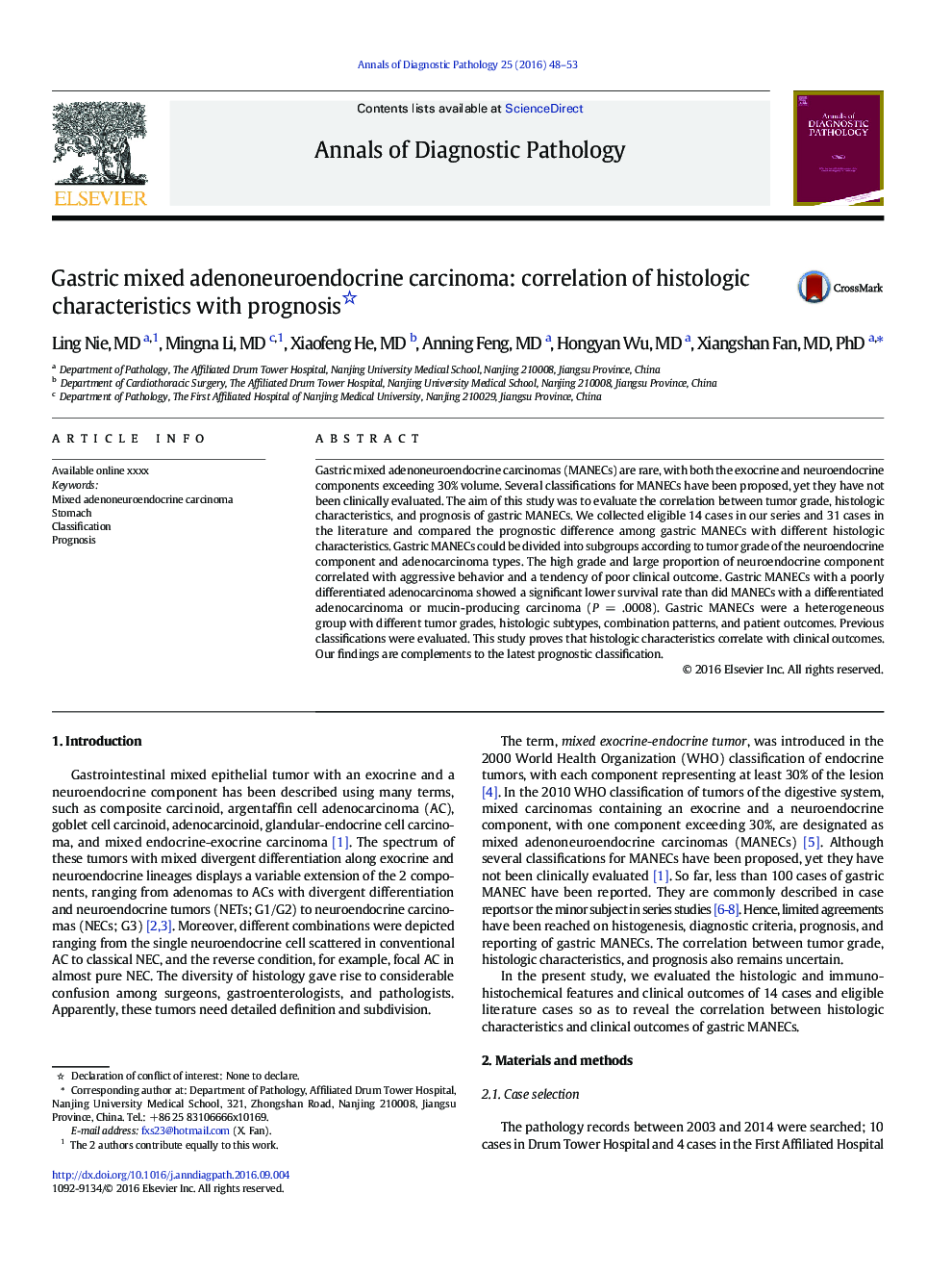| Article ID | Journal | Published Year | Pages | File Type |
|---|---|---|---|---|
| 4129656 | Annals of Diagnostic Pathology | 2016 | 6 Pages |
Abstract
Gastric mixed adenoneuroendocrine carcinomas (MANECs) are rare, with both the exocrine and neuroendocrine components exceeding 30% volume. Several classifications for MANECs have been proposed, yet they have not been clinically evaluated. The aim of this study was to evaluate the correlation between tumor grade, histologic characteristics, and prognosis of gastric MANECs. We collected eligible 14 cases in our series and 31 cases in the literature and compared the prognostic difference among gastric MANECs with different histologic characteristics. Gastric MANECs could be divided into subgroups according to tumor grade of the neuroendocrine component and adenocarcinoma types. The high grade and large proportion of neuroendocrine component correlated with aggressive behavior and a tendency of poor clinical outcome. Gastric MANECs with a poorly differentiated adenocarcinoma showed a significant lower survival rate than did MANECs with a differentiated adenocarcinoma or mucin-producing carcinoma (P = .0008). Gastric MANECs were a heterogeneous group with different tumor grades, histologic subtypes, combination patterns, and patient outcomes. Previous classifications were evaluated. This study proves that histologic characteristics correlate with clinical outcomes. Our findings are complements to the latest prognostic classification.
Related Topics
Health Sciences
Medicine and Dentistry
Pathology and Medical Technology
Authors
Ling MD, Mingna MD, Xiaofeng MD, Anning MD, Hongyan MD, Xiangshan MD, PhD,
